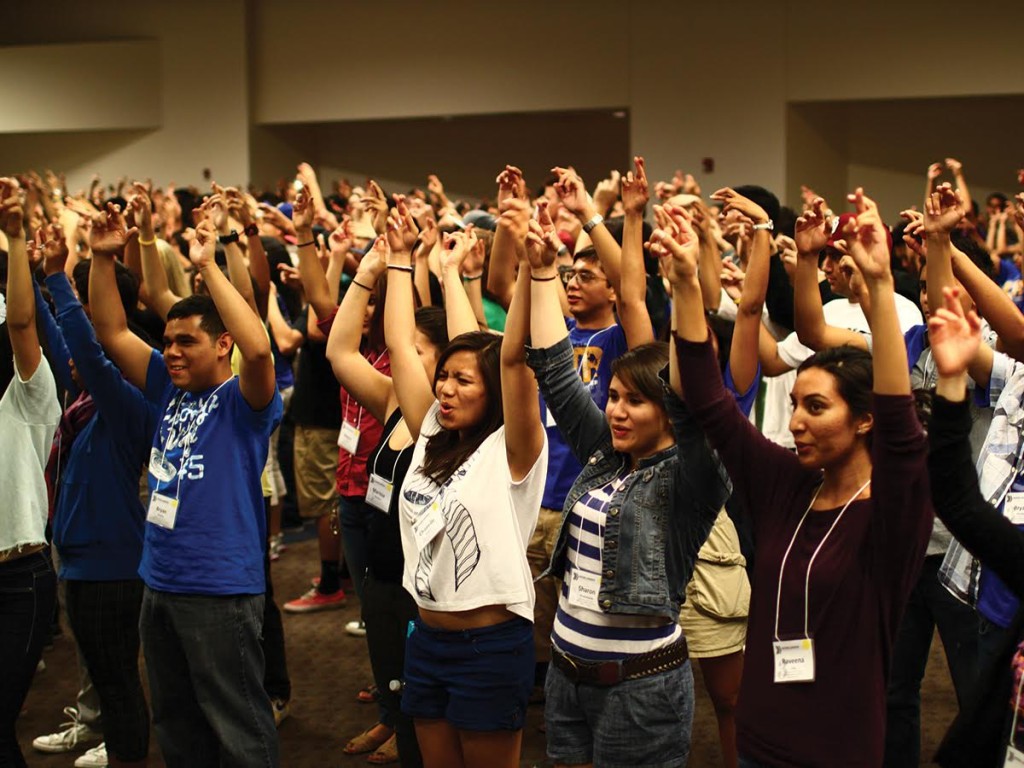
UCR is in the midst of a crisis. At a glance, it may seem to be the same UCR as last year. There have been no major renovations, no significant shuffling of faculty or any changes in the school’s outlook or mission.
Look more closely, though. Lot 30 and other Gold parking areas are filled to bursting by 10 in the morning. Freshmen are being housed in Glen Mor, housing normally reserved for upperclassmen, because the other residence halls are already packed with three people to a room. And general education classes are nigh impossible to get into.
All of these conditions point to a single cause: UCR’s record level of undergraduate admissions. The UC system is admitting close to 5,000 more freshmen than were admitted in previous years. For UCR in particular, this means an increase of 977 freshmen compared to last year’s 4,029 freshmen — an increase of almost 25 percent. Nor is this the end of the overload; the UC’s plan is to enroll another 5,000 students over the next two years.
The increase in enrollment is largely the fault of the UC Board of Regents. As an alternative to raising tuition for all students, the Regents decided a year ago to boost enrollments and gain funding from these new students. While this was considered a victory at the time by students and administrators who were looking at short-term effects, the current undergraduate class is now in an uncomfortable situation as those new students flood into UCR. The university is woefully underprepared for this influx, and the number of freshmen will only increase over the next few years.
It is also worth noting that UCR Chancellor Kim Wilcox is certainly not opposed to these increases in admissions. In a recent meeting with the UC Regents, Wilcox expressed his vision of UCR expanding to upward of 40,000 students (to put that in context, this would mean doubling the size of UCR’s population). As long as people in leadership positions at UCR are interested in seeing growth, especially on such a catastrophic scale, there is no chance that the campus community will see a restoration of the status quo — stable class sizes and no sharp rises in student population — of previous years.
There is a major threat that arises with the disappearance of this status quo; at risk is the very identity of UCR as a school. UCR may not be some small liberal arts college, but it has historically been a campus where students can get to know professors and vice versa. However, if growth — potentially, tremendous growth — is the future of UCR, then students will be at risk of becoming ciphers in a faceless mass. Already, the increased size of the freshman class is having detrimental effects on student access to professors, by virtue of the overfilling of classes. Further expansion of the student population will send the student-to-faculty ratio rocketing, and when this happens, everyone loses.
In the short term, there are really no options for the university or students to take other than the bandages that are already in place. Freshmen will just have to take up spaces in residence halls they would not normally fill. Gold parking spaces will have to be carved out of other lots wherever they can be. And additional classes will need to be set up to relieve the pressure on some of the more heavily-impacted courses. Ultimately, though, students have little choice but to deal with the grind every day; parking will be easier to find as people stop bothering to show up.
The long-term resolutions to this problem are obvious: If UCR is getting more money because of the increase in enrollment, then it absolutely needs to invest it in better accommodations on campus. This means that, over the course of the next three years, in which UCR’s freshman population is set to grow, the administration needs to work on building new parking lots and residence halls, and perhaps hire new faculty to help deal with the impact of freshmen on certain classes. In short, the infrastructure must be expanded, or UCR will never be able to do more than cope with the matching expansion of the campus population.
If UCR is going to see growth in its undergraduate class, then the only real solution to our overcrowding problem is to have an equivalent increase in the basic resources that constitute our campus. Anything else, and the learning experience at UCR will be severely hampered.








